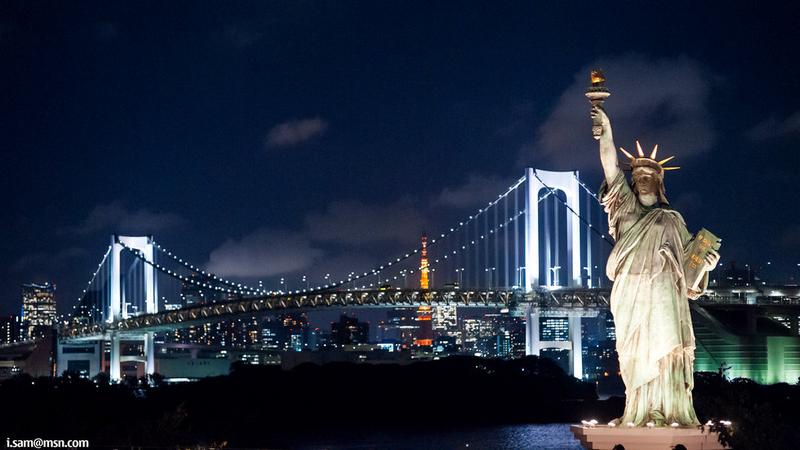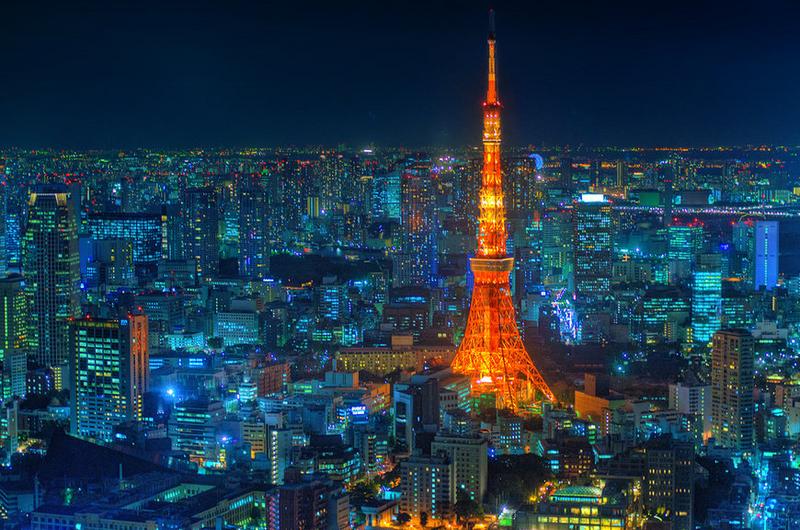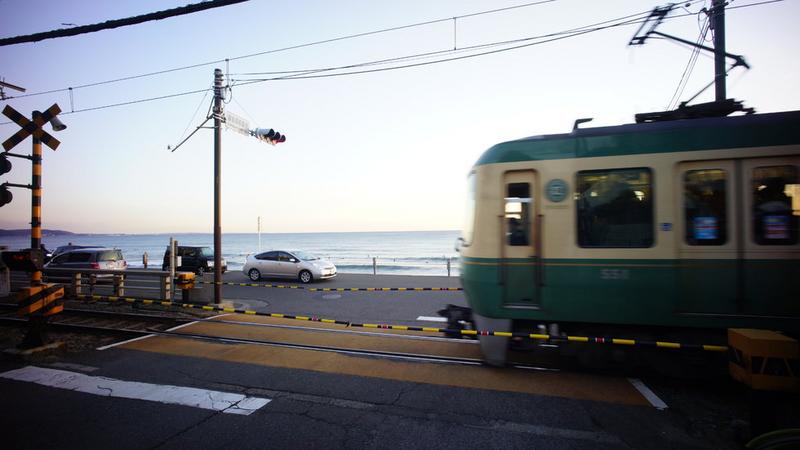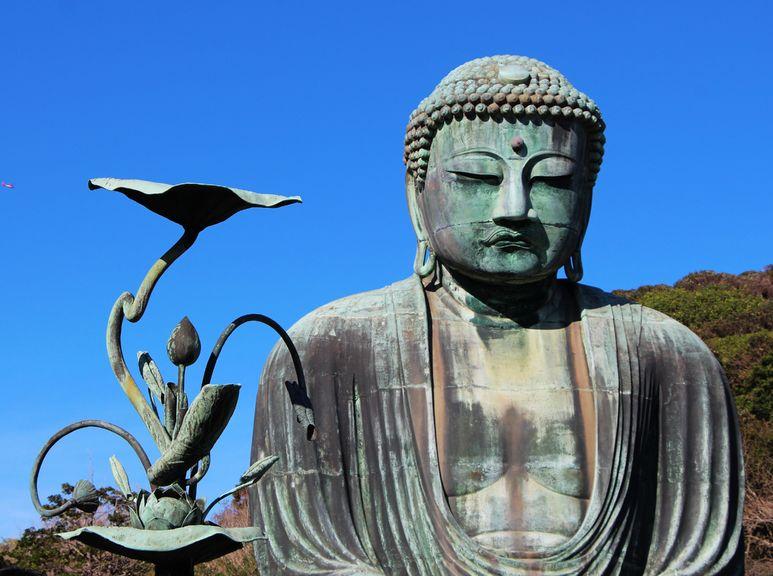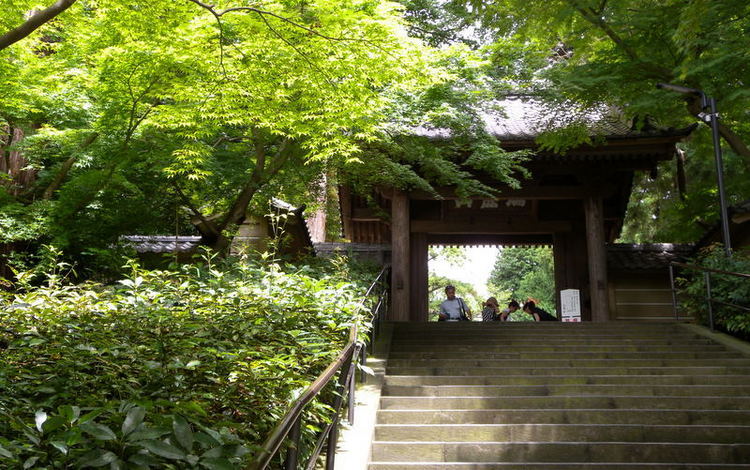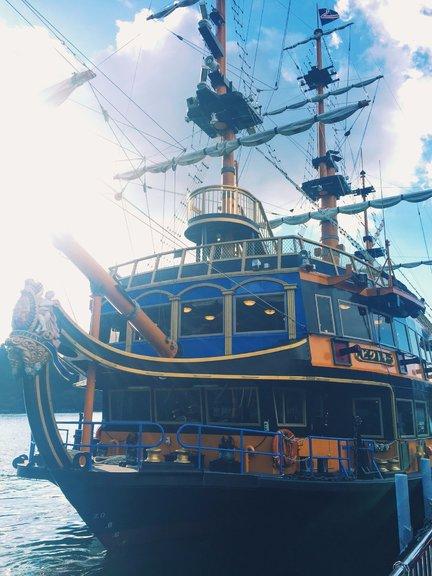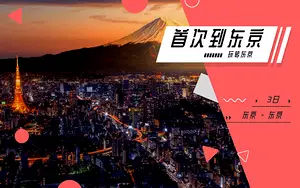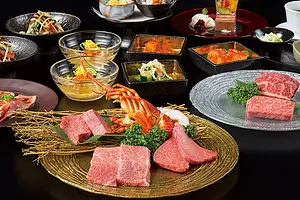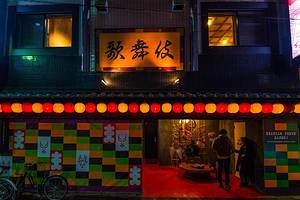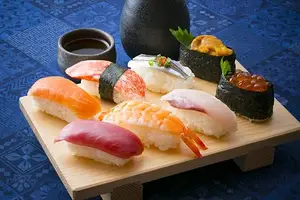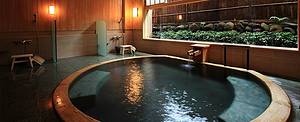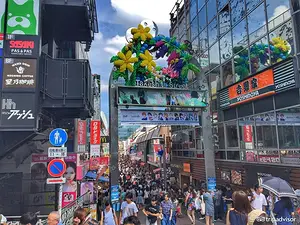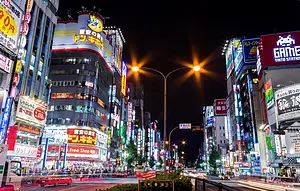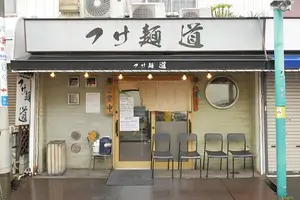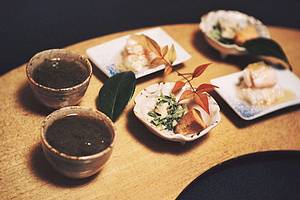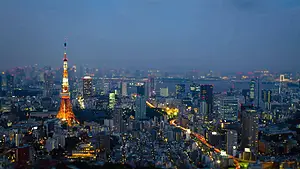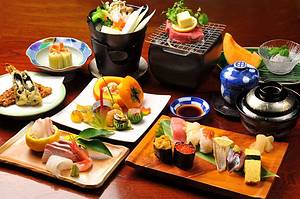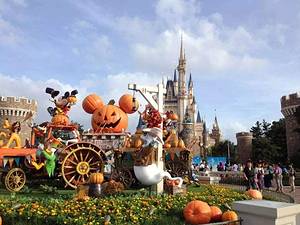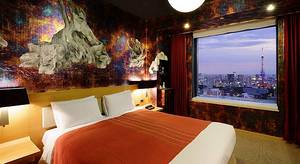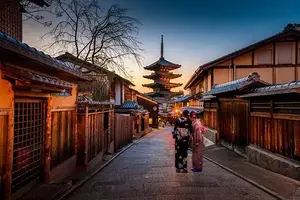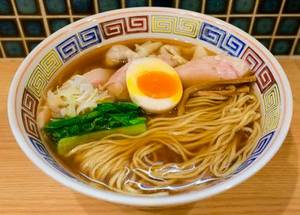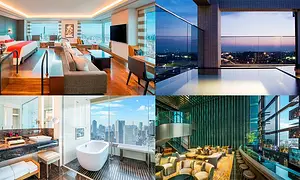Tokyo, Kamakura, and Hakone 5-day leisure trip
3 cities |
21 attraction(s) |
total distance 55
km
 TIPS
TIPS
Day1
Day2
Day3
Day4
Day5
Day1: Tokyo
4 attraction(s) ·
16 km
1
Odaiba is located on man-made land in Tokyo Bay and is the newest entertainment hub in Tokyo, particularly popular among young people. The main tourist attraction in Odaiba is Odaiba Seaside Park, which features the only beach in Tokyo. There are waterfront promenades for strolling and enjoying the sea views, and you can also get a glimpse of the Rainbow Bridge. The beautiful scenery has attracted many TV dramas to be filmed here. Facilities such as Tokyo Big Sight, Fuji TV Building, Toyota Mega Web, Museum of Maritime Science, and National Museum of Emerging Science and Innovation are located in Odaiba. The giant Ferris wheel and a wide range of shopping and dining facilities make Odaiba very popular.
From Odaiba, you can enjoy views of the Rainbow Bridge, Tokyo Tower, and other attractions. The dazzling night view is particularly beautiful, making it a must-visit for travelers who love photographing cityscapes.
Odaiba also has several large shopping areas, such as Venus Fort, Aqua City, Decks Tokyo Beach, and Odaiba 1-Chome Shopping Street.
10
km
2
The Imperial Palace generally refers to the area including the Imperial Palace Plaza, Nijubashi Bridge, Imperial Palace Outer Garden, and East Gardens of the Imperial Palace. It is located south of Hibiya Station and north of Otemachi Station. It was named "Imperial Palace" when the Emperor moved from Kyoto to Tokyo during the Meiji Restoration. Currently, some areas serve as parks for visitors.
It's hard to imagine that the Imperial Palace with its black tiles and white walls is located near the modern buildings of Tokyo Station, still retaining the charm of the Edo period. As a representative tourist attraction in Tokyo, it has witnessed the changes of time and protected the children of Edo in Tokyo.
Walking along the moat, the walls of Edo Castle can still be seen. The imposing statue of the military commander Kusunoki Masashige from the Kamakura period, intricately carved decorations can be seen at the entrance of Otemon Gate, and the Tainaimon Gate, as the main gate of the Kita-no-Maru Park, still welcomes visitors. In the Nino-Maru of the East Gardens, you can see the huge feudal lord's residence and exquisite gardens from the Edo period.
5
km
3
Roppongi is famous for its numerous bars and nightclubs, attracting foreigners to Tokyo's nightlife district. In recent years, Roppongi has seen the completion of two large-scale integrated buildings, Roppongi Hills and Tokyo Midtown, which offer a wide range of leisure facilities including restaurants, hotels, and theaters. It also houses cultural and art venues such as the Mori Art Museum, the National Art Center, and the Suntory Museum of Art, making it one of the best tourist destinations to experience the urban vibe of Tokyo. The 52nd floor of Roppongi Hills' Tokyo City View offers a 360-degree glass observation deck, providing one of the best views of Tokyo's nighttime scenery.
2
km
4
Tokyo Tower, officially known as Japan Radio Tower, also known as Tokyo Eiffel Tower, is located in Shibakoen, Minato, Tokyo, Japan. It is a red and white tower modeled after the Eiffel Tower in Paris, but stands at 332.6 meters, 8.6 meters taller than the Eiffel Tower.
Completed in October 1958, it was the tallest building in Tokyo until the completion of Tokyo Skytree (634 meters) in February 2012. It has always been one of the iconic landmarks of Tokyo. The tower has an observation deck offering panoramic views of Tokyo, with the possibility to see Mount Fuji on clear days. The tower's lighting changes color according to the season and is specially decorated with festive lights during Christmas and other holidays.
Day2: Tokyo
3 attraction(s) ·
6 km
1
One of the famous attractions in Tokyo, a large park with facilities such as a zoo, art gallery, and museum. There are also natural landscapes such as Shinobazu Pond and Take-no-Tsuji Fountain. The bronze statue of Takashi Nishioka is a symbol of Ueno Park. In spring, the park is famous for cherry blossom viewing in Tokyo.
4
km
2
Tokyo's oldest ancient temple located within the city, founded in 628. According to legend, it was originally built on-site when a fisherman caught a gold statue of the Goddess of Mercy, becoming Asakusa Temple. In the early Edo period, it was rebuilt on the orders of Tokugawa Ieyasu and expanded to its current size.
The entrance to Asakusa Temple is marked by the massive lantern-covered gate called Kaminarimon, which is a symbol of Asakusa and Japan as a whole. On either side of Kaminarimon stand imposing statues of fierce guardian deities, known as the Thunder God and the Wind God, giving rise to its academic name, "Furaijinmon."
Passing through the long shopping street, you can reach the main hall of Asakusa Temple, which became prosperous over time as Tokugawa Ieyasu designated it as a place for prayers for the shogunate, making it a cultural center of the Asakusa area. In the southwest corner of the temple, there is a 53-meter-tall five-story pagoda, which is a nationally protected cultural property. In the northeast corner, there is Asakusa Shrine, built during the Heian period, with its simple and elegant architectural style and exquisite carvings.
One of the liveliest events in Asakusa is the Sanja Matsuri, one of the three major festivals of the Edo period, held annually in May. The Sanja Matsuri, with its origins in the Edo period, fully displays the traditional customs and sentiments of the era. The highlight of the festival is the "carrying of the portable shrine," with groups of dozens of people carrying the portable shrines in traditional style from various directions to Asakusa Temple.
2
km
3
Tokyo Skytree, also known as Tokyo Solamachi, is a new landmark of Tokyo that was completed on February 29, 2012, and opened to the public on May 22, 2012. It has a height of 634 meters and observation decks at 350 meters and 450 meters. From the top, you can enjoy a panoramic view of Tokyo, and there are also leisure facilities such as shops, restaurants, and cafes. The shopping mall at the base of the tower is free to enter and offers a wide range of products. You can find local specialties from almost all regions of Japan there.
Day3: Tokyo
4 attraction(s) ·
7 km
1
Shibuya is one of the most distinctive and bustling districts in Tokyo. It is one of the commercial centers targeting mainly young people, and the famous Shibuya 109 building represents this district. Not just a shopping center, Shibuya 109 has become a symbol of GAL trendy fashion. It houses many department stores and fashion shops, as well as various types of small stores. Additionally, Shibuya offers various restaurants, bars, clubs, and live music venues, showcasing popular culture. If you walk from the center street of Shibuya to the PARCO department store, you will pass a slope called "Spain Hill," which has various clothing and grocery stores, dining and amusement centers with unique decor in the popular Spanish style, which is highly favored by young people.
The intersection in front of Shibuya station is very famous, as it is one of the busiest street crossings in the world. When the green light is on, the rushing stream of people pours into the street from all directions like a flood, and the enormous ads and screens around the many commercial districts add a different flavor to this busy urban Tokyo. Each street in Shibuya has its own style and character, and is home to myriad entertainment and dining options. If you come to Shibuya, don't forget to check out the famous Hachiko Memorial statue located outside of JR Shibuya station!
2
km
2
Meiji Shrine is the most important Shinto shrine in Japan, dedicated to Emperor Meiji and Empress Dowager Shoken. It features the largest green space in Tokyo.
The shrine complex includes the largest torii gate in Japan at the entrance, a "rising" symbolic approach, a main hall, and a treasure house. The main hall was built by the renowned shrine architect Shimotani Shingoro using only pebbles to ward off evil. The plants in the Meiji Shrine garden showcase different seasonal landscapes, but it lacks the iconic cherry blossoms due to initial restrictions on planting ornamental flowering trees. Instead, the lotus flower, beloved by Empress Dowager Shoken, has become the most important plant in the shrine and blooms in September. In autumn, the ginkgo tree-lined pathway at the entrance of the shrine becomes a beautiful sight with its golden leaves. During the October festival celebrating Emperor Meiji's birthday, various traditional performances are held in the shrine, with the ritual of yabusame (horseback archery) being the most special and having a 1500-year-old tradition. It's worth a visit if you have the chance.
4
km
3
Shinjuku Gyoen is a park in Tokyo that combines Japanese and French garden styles. It is the largest of its kind in Tokyo, located in the city center, spanning both Shinjuku and Shibuya wards. The park covers an area of approximately 58 hectares and is known as a lush European-style garden amidst the bustling city. The park boasts a rich variety of trees, with different scenery throughout the four seasons, including cherry blossoms in spring, autumn foliage in fall, verdant shades in summer, and white snow in winter. It is a popular destination for flower viewing in Tokyo. Originally granted to Naito Kiyonari by Tokugawa Ieyasu during the Edo period, the land was later given to loyal retainers for strategic purposes. It wasn't until the Meiji era that the Japanese government started using this vast land as an agricultural experimental field and established Japanese gardens. The entire park was destroyed during air raids in 1945 but was rebuilt in 1947. It is now recognized as one of Japan's three major national parks, alongside the Outer Gardens of the Imperial Palace and Kyoto Gyoen.
2
km
4
On a street in Tokyo, there are countless stories. This street is called Kabukicho, one of the few large red-light districts in the world. In addition, it is home to multiple cinemas, bars, nightclubs, love hotels, and other venues. Due to the bright lights and vibrant atmosphere at night, it is referred to as the "Sleepless Street (眠らない街)." For first-time visitors to Tokyo, Kabukicho is definitely a must-visit place.
Day4: Kamakura
5 attraction(s) ·
12 km
1
Enoshima is a representative attraction on the Shonan coast and is designated as a historical site and scenic spot in Kanagawa Prefecture (since 1960) and one of Japan's top 100 scenic spots (since 1927). Enoshima is a land-linked island connected to the mainland by a sandbar. There are several tourist attractions on the island, including shrines, parks, observatories, and caves. On clear days, Mount Fuji can also be seen. Visitors can reach Enoshima by ferry but exploring the forested areas can only be done on foot (or by taking the Enoshima escalator for a fee). There are three shrines on the island collectively known as Enoshima Shrine, where visitors can worship the Benzaiten deity for wealth and good luck.
3
km
2
Kamakura High School, officially known as Kanagawa Prefectural Kamakura High School, is referred to as one of the most beautiful high schools in Japan due to its close proximity to Kamakura Station, which was selected as one of the most beautiful train stations in Japan. This seaside high school served as the prototype for Ryonan High School in the manga "Slam Dunk". The scene where Akagi Haruko said "We have plenty of time" took place on the slope leading from the school to the station. The school used to be open to tourists, but it is now closed to protect the students. However, there may be opportunities to visit the campus during the summer vacation. Please note that schools in Japan prioritize the protection of students, so it is important not to take any photos while inside the school.
5
km
3
The Great Buddha of Kamakura, known as the symbol of the ancient city Kamakura, is located in Kotoku-in Temple. It is one of the three great Buddha statues in Japan. The statue is 11.5 meters tall (including the pedestal, 13.35 meters) and weighs 121 tons. It is a sitting statue of Amida Buddha with a face length of 2.35 meters and ear length of 1.9 meters. The interior of the statue is hollow and can be accessed from the back. Inside, there are obvious traces of multiple repairs. On the left side of the statue, there is a pair of large straw sandals, about one meter long. It is said that these were woven by children from Ibaraki prefecture as an offering to the Great Buddha. The fate of the Great Buddha of Kamakura has been similar to that of the city itself, often facing disasters. Originally built in 1238, the first wooden structure of the Great Buddha was completed after six years, but it was blown down by a typhoon three years later. In 1253, the bronze statue of the Buddha was recast and enshrined in the Great Buddha Hall, which has also undergone multiple repairs due to typhoons and fires. However, in 1498, the entire hall was destroyed by the backflow of seawater and the statue has been exposed to the elements ever since.
3
km
4
Hakone Hachiman Shrine is a Shinto shrine located in Kamakura, Kanagawa Prefecture, Japan, dedicated to Hachiman, the god of war. It was established in the second year after the end of the Jishin War in 1063. In 1180, the shrine was moved to its current location by Minamoto no Yoritomo, who became the ruler of Kamakura. In 1191, a fire broke out and the main shrine was built on a mountain behind the original shrine, which was also repaired. Since then, Hachiman became revered as a guardian deity of the samurai.
2
km
5
The name of the Enkaku-ji Temple comes from the Mahayana sutra "Enkaku Sutra". It was built at the end of the 13th century and was founded by Zen Master Wugan Zuyuan from the Southern Song Dynasty in China. The initiator was the ruling figure at the time, Hojo Tokisada. His father, Hojo Tokiyori, was also a devout Buddhist, and the development of Kamakura Buddhism in history had a lot to do with them. Additionally, D.T. Suzuki, who successfully introduced Zen Buddhism to the West in the 20th century, also studied Zen here when he was young.
Day5: Hakone
5 attraction(s) ·
17 km
1
おおわくだに
Owakudani is a popular tourist attraction located near Tokyo in the hot spring resort area of Hakone. It is a volcanic site formed after the eruption of the Hakone volcano, and it seems to tell of volcanic activity from about 3,000 years ago. The spectacular view of Mount Fuji can be seen from the observation point. The hot springs continuously bubble and emit white smoke, creating a magnificent and breathtaking sight. The poisonous spring water that bubbles up in Owakudani prevents it from becoming a hot spring resort, but it has become a tourist area. The famous "Onsen Black Eggs" are a specialty of Owakudani, where eggs are boiled using high-temperature sulfur spring water, turning the eggshells black due to the sulfur, and making the eggs taste even more delicious. In Owakudani, visitors can not only enjoy the black eggs but also witness the sulfur gas erupting from the ground and, on clear days, the perfectly intact view of Mount Fuji in the distance, making it an excellent observation deck.
Owakudani is also featured in the anime series "Evangelion" as the final resting place for the protagonist Shinji after he runs away from home. In the series, Owakudani is surrounded by desolate mountain walls and emits white gas on the ground, which represents sulfur gas in reality.
10
km
2
Lake Ashinoko was formed over 3,000 years ago by volcanic activity. It is a volcano lake located in the western part of Hakone Town, at the foot of Mount Hakone, and is the largest lake in Kanagawa Prefecture. Due to its location with Mount Fuji as a backdrop, it has become a famous tourist attraction. The climate here is often rainy and humid, making it rare to catch a clear view of Mount Fuji. However, on a fortunate sunny day, people can admire the serene and splendid beauty of the lake. Travelers can take a boat tour to enjoy the scenic views, and the unique pirate boat adds a touch of fun to the tranquil lake. Lake Ashinoko is known for its abundance of fish, such as rainbow trout and black bass, attracting many fishing enthusiasts.
3
km
3
Hakone Shrine was built in 757 AD (during the Nara period, Tenpyō Hōji era). It is located at the foot of Mount Hakone, along the shores of Lake Ashi. The torii gate of the shrine is situated along the shores of Lake Ashi and is clearly visible when boating on the lake. It was built by the water's edge to offer blessings for the launch of new ships.
3
km
4
Hakone Pirate Sightseeing Ship cruises at three ports along Lake Ashi: Moto-Hakone Port, Hakone-machi Port, and Moto-Hakone-Temples Port.
2
km
5
Hakone is famous for its "Hakone Seven Hot Springs," which are seven places where you can soak in Hakone's hot springs. In fact, there are many other hot springs, and some hotels also have their own small hot springs. In Hakone, you can experience various styles of hot springs. You can easily find a hot spring ryokan to enjoy the beauty of soaking. Hakone's hot springs are known for their delicacy, with both indoor hot spring pools enclosed with glass and walls, as well as outdoor baths. The Hakone Seven Hot Springs is the most famous place.
